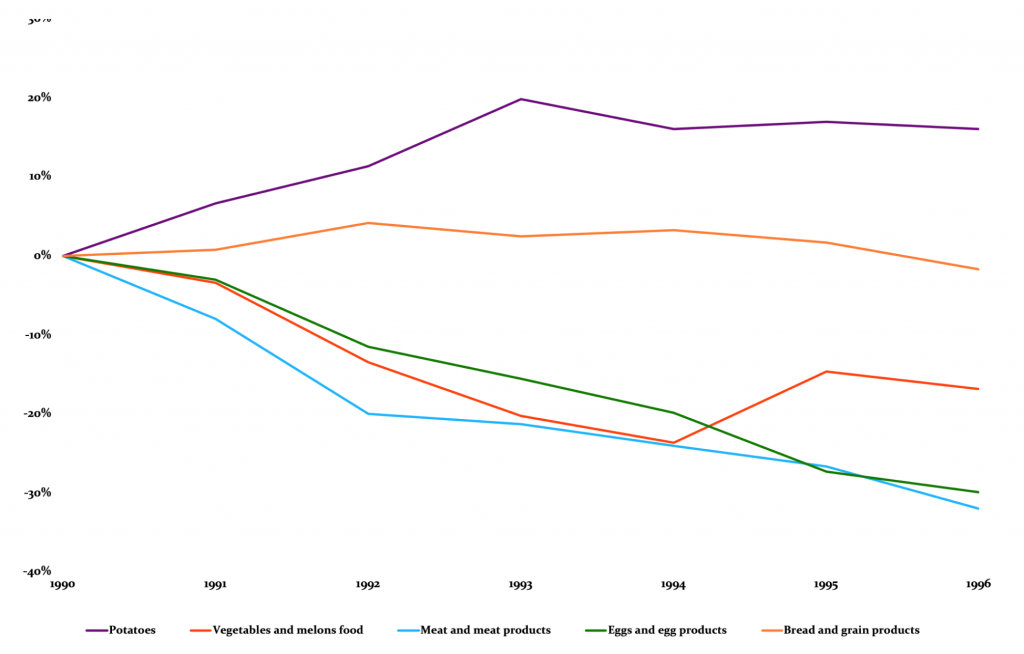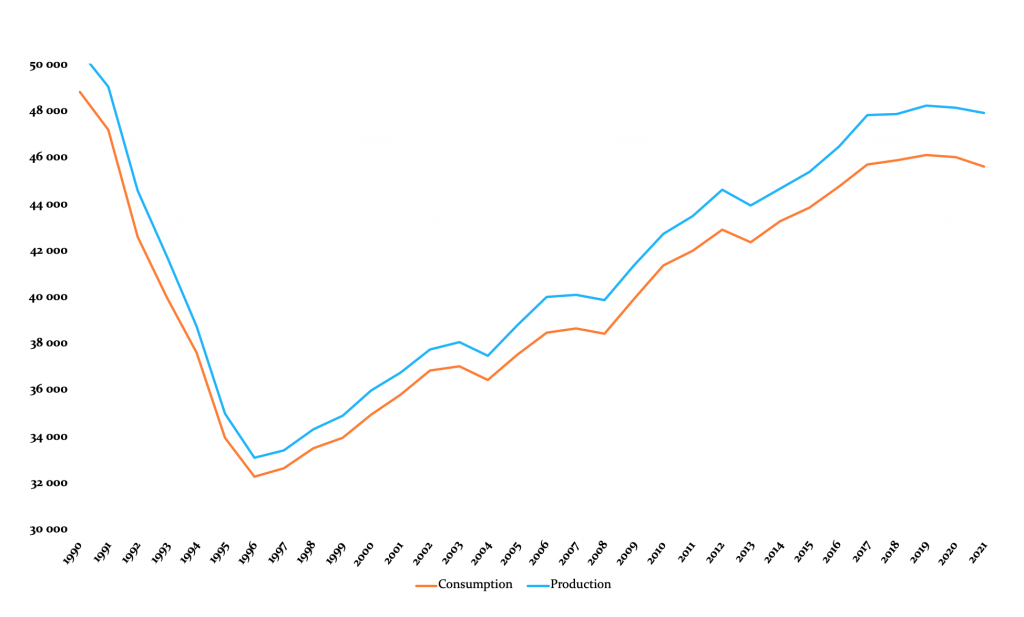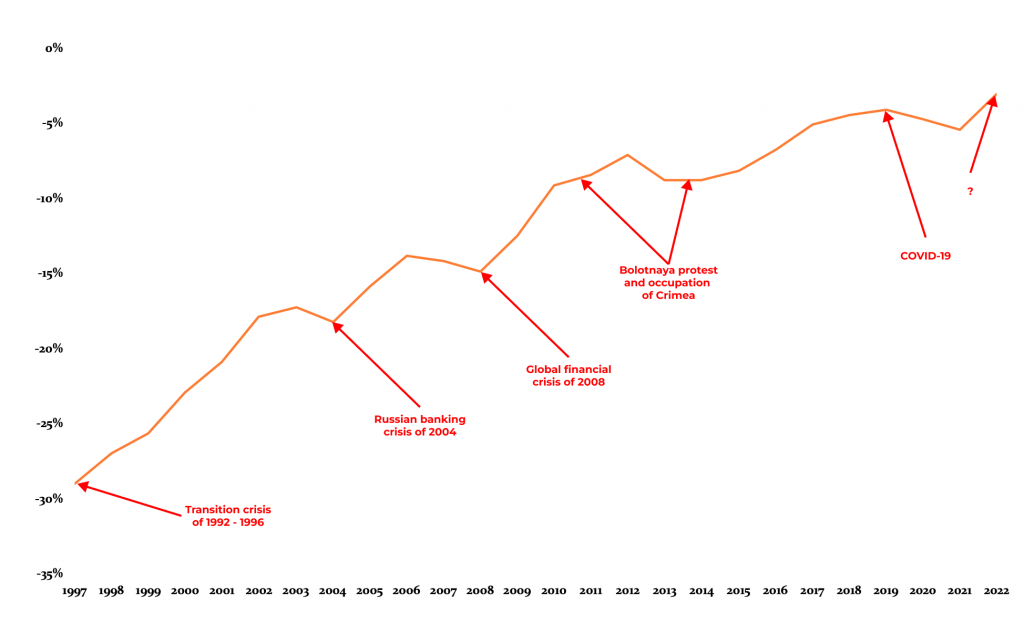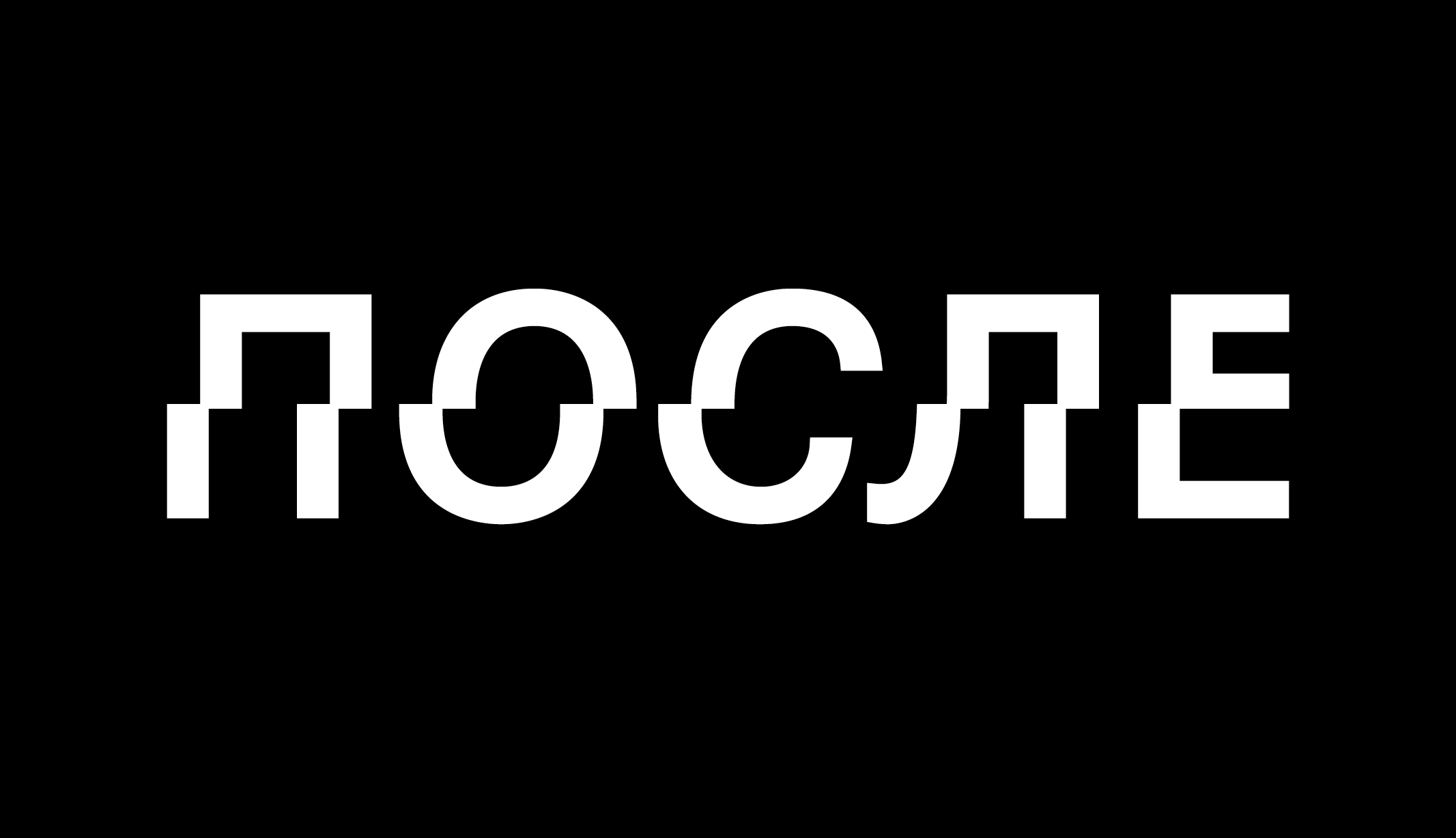On 13 December 2023, Putin held a phone-in with Russian citizens, the first phone-in after the invasion of Ukraine. Among other people reaching out to the President with their complaints, was Irina, a retired woman who lives in Krasnodar, a major city in Southern Russia. While claiming her love to the President, she did not hesitate to voice a pressing issue — the price for eggs rising so high that it’s outrageous.
Putin turned out to be perfectly aware of egg prices running amok and commented on the situation quite willingly. As he confessed in an intimate manner, he’s a big eater of eggs himself and the situation with the product becoming unaffordable hasn’t slipped under his radar. Besides, he explained why exactly the price for eggs has been rising so sharply. According to his estimates, the income of the Russian population has recently increased, including salaries, which is why consumers’ demand for eggs has gone up. Production volume, however, has not been scaling accordingly — the industry was too slow to satisfy avid buyers of its produce.
Against this background, a number of queries arise. What’s behind the “chicken -egg” question which stole the precious air-time of the president? How can rising egg prices be really explained and is Putin’s explanation in touch with socio-economic reality? Finally, what kind of income and salary increase Putin is talking about when Russian society remains in the grip of war?
At first glance, any correlation between purchases of eggs and considerable structural shifts in the economy may seem exaggerated. However, if we look closely at the volumes of the product consumption and analyze its dynamics, we will see that costly eggs could be a symptom of something bigger. As the following analysis shows, the rising price for eggs is an early bird indicator, a canary in the coal mine — a signal of the socio-economic changes that the ongoing war of aggression causes, at the same time revealing the drastic inequalities within Russian society existing well before the invasion of Ukraine.
The egg, a hidden indicator
As humble as it may seem, an egg might shed some light on people’s material well-being. It’s easy use and culinary versatility, relevance to various dietary preferences and nutrition value makes it one of the most welcomed products in Russian kitchens. Eggs were always present among the basic products in Russia’s “market basket” — a commodity bundling technique that was used to calculate a minimum living wage up until 2021. As per the government calculations, eggs were generally supposed to be consumed in big quantities and by all groups of population.
With all the ever-present welcoming attitude to eggs, still, consumption practices and economic behavior, could not remain unchanged. In order to have an idea of their dynamics, let’s look at the consumption of food products in Russia from 1990 to 1996. At the time, in the aftermath of the collapse of the Soviet Union and the beginning of the forced transition to the market economy, thousands of people were unable to make their ends meet. How was it reflected in their general demand for food, and what role did eggs play in consumption structure?
The graph below demonstrates how individual consumption of different foods (bread, potatoes, eggs, etc.) changed throughout the last thirty years. It is based on calculation of the physical consumption of products taken per weight or per unit. Physical consumption reflects what people were buying and in what quantities, and not how much they spent.
Graph 1: Change in individual consumption of foods (1990 to 1996), %

Data source: The Federal Service for State Statistics (Rosstat). 29.09.2023
As we can see in the graph, throughout the period of 1990–1996, marked by the unprecedented socio-economic upheavals, consumption dynamics varied depending on the product (here shown as the per centage change from the base year 1990). For example, while people began buying more potatoes, the purchase of bread witnessed only minor fluctuations and remained relatively stable. As for eggs, their purchases dropped significantly, by noticeable 30% (a greater drop here can be observed only for meat). Why was that so? Did it happen solely because eggs suddenly became less affordable for the majority of people who lost their jobs and their savings and had to adapt to the market reality in its most savage form? Or did it happen because the post-Soviet food industry for some reason couldn’t provide sufficient supply?
The next graph represents the production and consumption of eggs (in million pieces) during the same period of 1990–1996 and might help us answer these questions.
Graph 2: Volume of production and consumption of eggs, mln. pcs.

Data source: The Federal Service for State Statistics (Rosstat). 26.09.2023
Here we can clearly see that production of eggs diminished over this period as well as consumption: dynamics of these two major types of economic activity were symmetrical. However, as it is visible from the graph, production drop did not precede a drop in consumption — on the contrary, it came after it. This sequence means that during this period there was a persistent small excess of supply at the market (1.5 billion eggs a year on average), so eggs were always physically available to consumers. In other words, there was no shortage of eggs that could have led to prices increase, and therefore make the product unaffordable. The drop of consumption was driven by something else.
The lowest level of excessive supply can be observed in 1997, when consumption of eggs was beginning to finally rise: production was lagging behind the path of increasing demand but was still sufficient and could meet the needs of consumers. Whether this consumption was falling or rising, eggs were produced in sufficient quantities and followed the dynamics of consumption accordingly. Had Putin been to comment on this, his logic (“supply can’t keep up with the growing demand”) would be completely falling.
In fact, the production-based explanation is hardly plausible here because the aforementioned correlation between consumption and production of eggs in Russia remained the same even after 1997. The supply excess was always present, at least up until very recently. In the end of the 2021, for example, two months before Russia’s invasion of Ukraine, there was a supply excess of 2.3 billion eggs. As the graph demonstrates, from 1990 till 2021 (later data is unavailable), supply of the eggs had been only following demand, and demand — whether people began buying more or less — had been driven by other factors.
Now let’s look closely at the physical consumption of eggs through a more sensitive lens. As we have shown, consumption of eggs fell down throughout the transition period of 1990–1996. What was happening next? Were there other historical moments when people were buying eggs in lesser quantities than before? Or is a sudden drop in consumption a specific phenomenon of the 90s — an instant of the past hardships allegedly overcome by the Kremlin’s effort, as the president often claims?
Figure 1: Change in individual eggs consumption (1997-2022), %

Data source: The Federal Service for State Statistics (Rosstat). 26.09.2023
As it is visible on the graph, consumption of eggs began growing in 1997 (by the way, it never got back to the level of 1990, see Graph 1). However, later on, after the transition period was already over, consumption of eggs witnessed downward fluctuations. People purchased fewer eggs in 2004 (the year of Russian banking crisis), in 2008 (global financial crisis), and in 2013–2014 (Kremlin’s “conservative turn”, followed by the occupation of Crimea), and 2020 (COVID-19 pandemic). While there is no causality between drops in eggs consumption and crises, be the latter economic or political, there is an observable correlation between them.
According to the graph, the correlation identified above has been present for more than thirty years. In 2022, such correlation cannot be detected anymore: the on-going crisis prompted by Russia’s invasion of Ukraine does not coincide with the drop in egg consumption. On the contrary, in 2022, Russian consumers have been buying more eggs than before, despite the ongoing war of aggression and its impact on the country’s economy. Neither the 2008 crisis, nor COVID-19 coincided with the boom in egg consumption — the correlation was inverse. How could this paradox be explained?
The poor get richer
There are two factors that are traditionally used to analyze and explain economic trends in respect to demand: price and income. To be more specific, when it comes to consumption volumes, these are market price and consumers’ income. Both these factors have an effect on consumers, and the relationship of their effects defines product affordability. But these effects are made in different ways, so each of these two factors has its own logic and therefore its own analytical meaning. In respect to consumption, market price is a purely economic variable: it reflects relation between products circulating in the market and being potentially available to a particular consumer. Consumers’ income is a socio-economic variable: it reflects socio-economic relation between potential consumers of a particular product. For simplicity’s sake, while market price could be conditionally called a “market factor” of consumption, income, in its turn, could be called a “class factor”.
In the case of eggs, the price is rising, so here we deal with the increase as the effect, and not the cause of the changing consumption. Hence, capturing recent income dynamics could provide insights into the recent paradoxical increase of the egg consumption. In fact, Putin’s answer — growing “demand” caused by the growth of the population’s income — already touched upon the income-based explanation. Let’s not disregard his answer automatically, and focus specifically on the correlation between consumption and income, making the income dynamics of the Russian consumers the object of further analysis. This will help us either confirm and elaborate this intuition, or prove Putin wrong. At the background of the current inflation rates, currency exchange rates, and the impact of Western sanctions, on the one hand, and billions of military spending, on the other, the question of well-being of the population seems ever more pressing.
A key income-based indicator that demonstrates changes in economic well-being is the so-called median income per capita. It represents the middle value of the income distribution and is calculated on a per-person basis, thereby showing that 50% of the population are below a certain level of income, and the rest 50% are above. The table below shows how its value changed during the last 5 years.
Median income per capita, RUB
| 2018 | 2019 | 2020 | 2021 | 2022 | |
| Income | 24,794 | 26,363 | 27,036 | 30,083 | 34,806 |
| Year-on-Year Growth | 6,33% | 2,55% | 11,27% | 15,7% |
As shown in the table above, median income has been growing for the last 5 years. In 2022 it grew by a staggering 15%, and in 2021 the annual increase was more than 11%. It is noteworthy that during 2021 eggs consumption didn’t increase — on the contrary, it was falling. This could mean only one thing: the sudden increase of the eggs consumption that has been happening in 2022 is not the effect of the median income growth on the country level. While certain growth is visible, this doesn’t mean that Russian citizens are now being better paid.
Now let’s move on and look at the income growth and egg consumption more closely, juxtaposing the indicators to each other and taking into account distribution across different regions of the country, namely its federal subjects.
Egg consumption growth and median income growth, increase from 2021 to 2022
| Region | Eggs consumption growth | Growth in the median income in the region |
| Arkhangelskaya oblast | 1,22% | 26,22% |
| Tyumenskaya oblast | -5,41% | 22,78% |
| Republic of Tatarstan | 0,64% | 18,52% |
| Volgogradskaya oblast | 4,22% | 16,53% |
The table above shows that there is no actual correlation between growth in median income and growth in eggs consumption (in those particular regions). Arkhangelskaya oblast, leads in terms of the growing median income among other Russian regions, but consumption of eggs there has grown for 1.22% only. Tyumenskaya oblast is the second fastest growing region when it comes to median income, but it experiences a decline in egg consumption. As far as other regions are concerned (including those that are not shown in the table but have been subject to the same analysis), there is little correlation between growth in median income and egg consumption.
If regional income growth doesn’t explain the situation, another approach should be tested in order to reject or confirm the idea of income-based increase of egg consumption: income distribution should be somehow socially stratified (again, income is a socio-economic and not the market factor). In order to do the social stratification, let’s sort Russia’s regions, or the federal subjects of the country (as its constitutive political and administrative entities) by median income per capita (in the ascending order). Then, we split them into four groups: Group 1 refers to the subjects with the lowest median income (such as Republic Khakasiya, Chechen Republic, Tyva Republic), while Group 4 to the ones with the highest (such as Moscow, Saint-Petersburg , Magadanskaya oblast). By doing so, we will stratify not consumers but various parts of the country. Although this is not an ideal approach to stratification-based analysis, such a method could work in the absence of stratified data and reveal the existing patterns, if there are any.
Average median income growth per Group, % to previous year
| 2019 | 2020 | 2021 | 2022 | |
| Group 11 | 5,81% | 3,9% | 8,92% | 14,06% |
| Group 22 | 6,21% | 3,54% | 8,98% | 14,6% |
| Group 33 | 6,37% | 3,27% | 9,1% | 14,51% |
| Group 44 | 7,21% | 4,41% | 10,43% | 15,22% |
As we can see here, median income has been growing in each of these four groups, with the growth rate almost identical. We can also observe that income growth in 2022 speeded up by almost 60% compared to 2021 — there was a veritable spike of growth.
Now let’s see how consumption of eggs varies depending on the group.
Eggs consumption growth per Group, % to previous year
| 2019 | 2020 | 2021 | 2022 | |
| Group 1 | 0,15% | -0,93% | -0,42% | 3,04% |
| Group 2 | 0,3% | -1,44% | -1,41% | 1,81% |
| Group 3 | 0,34% | -1,1% | 0,25% | 1,57% |
| Group 4 | 0,36% | 0,59% | -0,47% | 0,81% |
As it is shown in the table, during the period of 2019–2021 consumption of eggs dropped slightly (this could be explained by the general effect of COVID-19 pandemic on Russian consumers). In 2022, the situation changed. The biggest growth in egg consumption could be observed in Group 1 (+3.04%), and the lowest — in Group 4 (0.85%). Given that Group 1 refers to the group of regions with lowest median income per capita, here a strong pattern reveals itself: egg consumption grew, and this growth was driven by the income increase of the poorest groups of population. In other words, it’s not the overall improvement of economic well-being that made Russian people rush to buy more eggs — it’s the well-being of certain groups of people, those belonging to the lower social stratum.
In a way, Putin was right, claiming that higher income must have affected consumption of eggs; only he forgot to specify one thing — who those people were. Should he have mentioned that these were the poorest ones, this would be only to his benefit, wouldn’t this? The needy ones now appear to have improved their life conditions, or at least able to afford those foods that were less affordable before, and all this when the country is at war. Such a claim could have only gained him more points, should he play this card. But he didn’t.
This makes things more entangled, even though the correlation between consumption of eggs and consumer income, which turned out to be the income of the poorest, has been clarified. Why did certain people who used to gain less than the other Russians suddenly started to earn more? Was there a secret welfare plan, realized without Russian citizens being conscious of it? At the end of the day, where does this money come from?
Who’s poor?
Let’s take another look at the growth of eggs consumption, now distributed among various federal subjects. This growth, as it has been shown before, actually revealed itself already in 2022. Seeing the trend, we may assume that it was less dramatic than in 2023, even though we do not know for sure (the data for 2023 is not available yet).
Top-20 federal subjects with highest eggs consumption growth, %5
| Federal subject | 2022 |
| Yaroslavl region | 9,12% |
| Chechen Republic | 8,49% |
| Kurgan Region | 6,37% |
| Republic of Tyva | 6,25% |
| Krasnodar Krai | 5,83% |
| Tomsk region | 5,79% |
| Chelyabinsk region | 5,68% |
| Republic of Altai | 5,56% |
| Ulyanovsk region | 5,28% |
| Kemerovo region | 5,11% |
| Omsk region | 4,82% |
| Republic of Dagestan | 4,73% |
| Magadan Oblast | 4,67% |
| Perm region | 4,44% |
| Volgograd region | 4,22% |
| Astrakhan Oblast | 4,1% |
| Kaluga region | 3,88% |
| Chuvash Republic | 3,66% |
| Republic of Crimea | 3,49% |
| Altai Krai | 3,25% |
The areas listed above have little in common in terms of their location, climate, size, cultural traditions, etc. And yet, there is something that they share: their strategic importance for Russia’s war against Ukraine. In some of them, military industrial complex is based (for example, Kurganskaya oblast is famous with Kurganmashzavod, where infantry fighting vehicles are produced; Yaroslavskaya oblast is known for manufactures of avionics and engines, etc.). Other areas host prisons with the largest number of prisoners, some of whom were notoriously recruited by the private military companies (Krasnodarskiy krai, Kemerovskaya oblast). Finally, among these federal subjects are those where military draft was especially high.
It is not a secret that the Russian government aimed to enlist people from poorer regions by attracting them with high salaries. The idea behind this policy was to prompt economically insecure people to join the war and pacify people from richer regions. Whether people were drafted, recruited by contract as professional soldiers, joined private military companies, or employed in the military industry, they must have started to receive salaries incomparable with what they were paid before. In respect to soldiers, those of them who survived and already got back home, or families living in these poor regions far behind the lines and getting their husbands’ salaries, definitely got more money to spend. For example, in Tyva Republic median income per capita in 2021 was 17 902 RUB (meaning that 50% of the Republic’s population earned below this amount), while the minimum salary paid to the soldier drafted in September 2022 was 195 000 RUB. The gap between these two income amounts — pre-War income and War-related salary payment — is striking.
What all this analysis shows is that the war money began flowing through the Russian economy already in 2022. The “egg question”, which was voiced publicly by Irina at the phone-in with Putin and perplexed the audience, turned out less idle than it may have seemed before. A recent surge in egg consumption made us search and find explanations beyond mere supply and demand dynamics, which might have been guiding Putin’s response. The egg serves as a unique indicator of income growth but this income is distributed in a peculiar way. The growth in egg consumption is more pronounced in areas with lower incomes, illustrating a pattern of increased consumption among those who suffered most from the country’s structural inequalities. It is these people whose poverty, among other things, made them opt to serve the military enterprise in different ways. In this respect, eggs not only pointed out a paradoxical case of food consumption increasing at the times of war but also served as a guiding thread through the structures of war economy and war money. At this point, it’s difficult to predict how this money will serve a carnivorous government or devastated society. What’s clear for now is that some families can finally afford their foods, which is why social inequalities could be forcing people to join the war even further. One thing certain is that the prices for eggs have indeed been rising to an outrageous degree, because there are people who can afford buying them — and at the highest possible cost.
- Group 1: Republic of Ingushetia, Republic of Tyva, Karachay-Cherkess Republic, Republic of Kalmykia, Republic of Mordovia, Republic of Mari El, Republic of Altai, Chuvash Republic, Kurgan Region, Republic of North Ossetia-Alania, Orenburg Region, Saratov Region, Stavropol Territory, Chechen Republic, Altai Territory , Penza region, Republic of Khakassia, Republic of Crimea, Astrakhan region, Kirov region, Ulyanovsk region, Kabardino-Balkarian Republic.
↩︎ - Group 2: Udmurt Republic, Volgograd region, Republic of Buryatia, Pskov region, Kemerovo region, Republic of Dagestan, Ivanovo region, Kostroma region, Smolensk region, Omsk region, Chelyabinsk region, Oryol region, Vladimir region, Ryazan region, Novgorod region, Tambov region, Transbaikal region , Irkutsk region, Republic of Bashkortostan, Tomsk region.
↩︎ - Group 2: Udmurt Republic, Volgograd region, Republic of Buryatia, Pskov region, Kemerovo region, Republic of Dagestan, Ivanovo region, Kostroma region, Smolensk region, Omsk region, Chelyabinsk region, Oryol region, Vladimir region, Ryazan region, Novgorod region, Tambov region, Transbaikal region , Irkutsk region, Republic of Bashkortostan, Tomsk region.
↩︎ - Group 4: Nizhny Novgorod Region, Leningrad Region, Amur Region, Komi Republic, Sverdlovsk Region, Primorsky Territory, Republic of Tatarstan, Krasnodar Territory, Khabarovsk Territory, Republic of Sakha (Yakutia), Moscow Region, Murmansk Region, St. Petersburg, Sakhalin Region, Arkhangelsk Region, Magadan region, Tyumen region, Moscow, Khanty-Mansi Autonomous Okrug, Yamalo-Nenets Autonomous Okrug.
↩︎ - In this analysis, values displaying a high level of deviation from the established distribution were excluded from the population. This exclusion aimed to enhance the accuracy of the dataset by focusing on more representative elements, ensuring robust and reliable findings. Excluded regions are Chukchi Autonomous District and Kamchatka Krai.
↩︎







